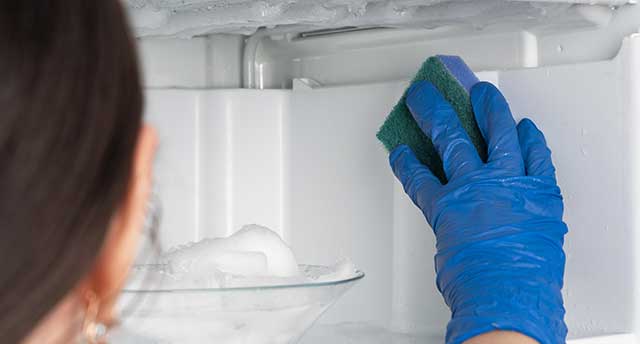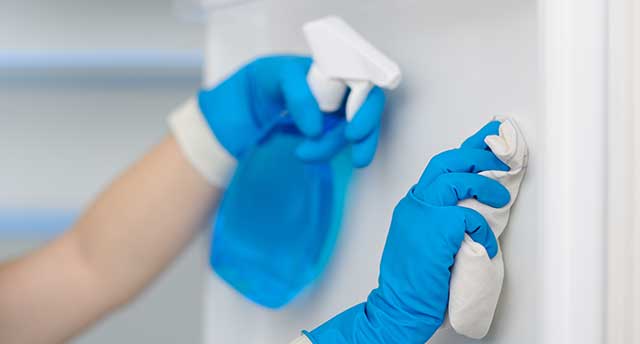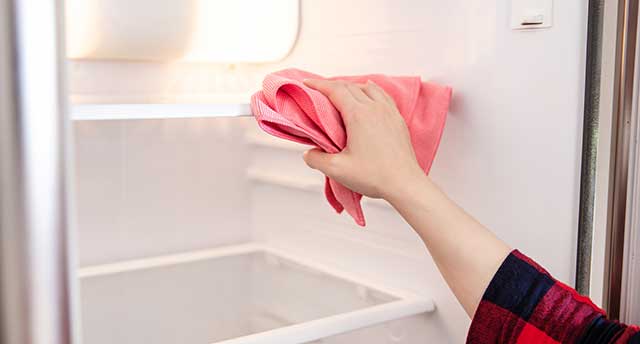The number one concern when you store a refrigerator (fridge) is the development of mould and mildew. We have provided the below guide to better help you in ensuring your refrigerator is stored correctly whilst dispelling a few rumours of how you can avoid the unwanted growth of mould and mildew.
Overview
Refrigerators come in all different weights, shapes and sizes. Today, a fridge can even come with built-in televisions, phone apps to view the contents of your refrigerator to tell you if you need to buy more food for example and more compartments than a high-end luxury vehicle.
Turn off and defrost your refrigerator for storage

Before you decide to store your fridge, ensure you turn off and fully disconnect it from power 24 hours prior before moving or at the very minimum the night before. Ultimately you need to let the fridge come back to an adequate room temperature to ensure your freezer has been fully defrosted. Just like when you received your refrigerator upon delivery, you need to let the compressor/gas settle and leave it upright. Your fridge in-turn needs the same process to occur in reverse to prevent any damage during the removal/moving process.
For further information specific to the make and model of your fridge, refer to the owner’s manual.
Clean your refrigerator

Once you have disconnected the power to your fridge/freezer, it is time to clear out and remove all the contents and shelving trays (including ice trays) from the cavity. You can then begin the cleaning and disinfecting of your fridge almost right away ensuring you remove any crumbs or small pieces of food to avoid attracting bugs or vermin overnight and whilst your refrigerator is in storage. Experts recommend cleaning with warm water and dishwashing soap whilst applying baking soda for the more stubborn stains however there is plenty of cleaning products specific to refrigerators out on the market which will do roughly the same job.
Soak up moisture and dry your refrigerator

Once your fridge/freezer is completely cleaned and disinfected, you need to ensure it is completely dry to ensure no mould can build up whilst in storage. The best way to do this is with a soft absorbent towel and through keeping the door ajar as long as possible prior to it being moved into storage. By removing any excess moisture, you greatly reduce the chance of mould or mildew to develop at a later stage. Your refrigerator is now ready to be moved. Avoiding mould whilst your fridge is being stored.
Regardless of how well you clean or dry your fridge, there is always a chance of mould and mildew still developing. Mould is a form of fungi and as such, can quickly grow by making spores.
One of the theories on avoiding mould build in when storing a refrigerator was to leave a tea bag inside the fridge to absorb moisture, but there is a downside to doing this as well. If the teabag builds up too much moisture it can often begin leaking and leaving a stain.
Instead, try using a roll of toilet paper. It is absorbent by nature without the stain. Alternatively, you can purchase moisture absorbing desiccant packets as well.
Removal & Storage of the refrigerator

The best way to move and to store a fridge is upright. Your removals professionals will know how to protect your refrigerator and use adequate equipment to make sure this is removed and loaded correctly for storage without any damage. Make sure to never place a fridge on its side even just for a short period. Not leaving your refrigerator upright can cause mechanical derangement and render the refrigerator useless.
If you store your fridge in a warehouse or self-storage type environment, we recommend using a piece of cardboard to keep the doors open if possible. If this is being stored in a shipping container or being shipped abroad however this technique is rendered useless as your fridge will be enclosed in the padding/wrapping needed to protect the refrigerator in transit.
In this circumstance, a professional mover will begin wrapping the fridge from inside the doors and as such leaving a gap which will also allow the blanket to absorb some of the unwanted moisture. It is still recommended however you use a toilet roll or desiccant absorber of some kind for added protection.
Now, you know how to get ready for storing a refrigerator in a storage facility or for your next move. A little bit of extra care goes a long way in protecting your fridge.

